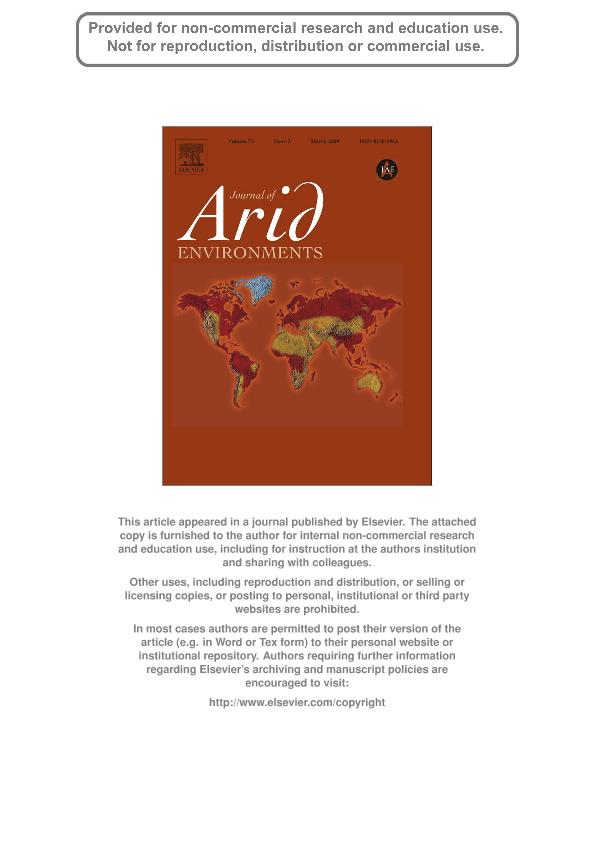Artículo
Diet of a fossorial rodent (Octodontidae), above-ground food availability, and changes related to cattle grazing in the Central Monte (Argentina)
Rosi, Maria Irene ; Puig, Silvia
; Puig, Silvia ; Cona, Monica Ines
; Cona, Monica Ines ; Videla, Fernando
; Videla, Fernando ; Mendez, Eduardo
; Mendez, Eduardo ; Roig, Virgilio German
; Roig, Virgilio German
 ; Puig, Silvia
; Puig, Silvia ; Cona, Monica Ines
; Cona, Monica Ines ; Videla, Fernando
; Videla, Fernando ; Mendez, Eduardo
; Mendez, Eduardo ; Roig, Virgilio German
; Roig, Virgilio German
Fecha de publicación:
03/2009
Editorial:
Academic Press Ltd - Elsevier Science Ltd
Revista:
Journal of Arid Environments
ISSN:
0140-1963
Idioma:
Inglés
Tipo de recurso:
Artículo publicado
Clasificación temática:
Resumen
Overgrazing by livestock has caused desertification in the Monte, where ctenomyids and livestock share grasses as main food items. The diet of Ctenomys eremophilus, above-ground food availability and changes related to cattle grazing are analyzed in the arid plain of Mendoza, Argentina. The most available categories were grasses, followed by low shrubs and tall shrubs. Tuco-tucos showed dietary generalism, ate mainly above-ground plant parts, preferred grasses and avoided shrubs at both grazed and ungrazed sites. Plant cover, grass diversity and availability decreased under livestock grazing, which was reflected in the diet by a lower percentage of grasses, a shift toward low shrubs and higher number of frequently used resources. Tuco-tucos in the grazed paddock compensated for lower consumption of vegetative plant parts by increasing the use of Prosopis flexuosa pods stored inside burrows. Moreover, greater dietary variation among individuals suggests foraging restricted to the items closest to burrow holes. These feeding tactics would allow them to reduce above-ground foraging as a response to high raptor predation risk due to increased bare soil. The plant recovery detected during the rest period, favoured by moderate stocking rate and rotational grazing system, would allow coexistence of tuco-tucos and cattle.
Archivos asociados
Licencia
Identificadores
Colecciones
Articulos(IADIZA)
Articulos de INST. ARG DE INVEST. DE LAS ZONAS ARIDAS
Articulos de INST. ARG DE INVEST. DE LAS ZONAS ARIDAS
Citación
Rosi, Maria Irene; Puig, Silvia; Cona, Monica Ines; Videla, Fernando; Mendez, Eduardo; et al.; Diet of a fossorial rodent (Octodontidae), above-ground food availability, and changes related to cattle grazing in the Central Monte (Argentina); Academic Press Ltd - Elsevier Science Ltd; Journal of Arid Environments; 73; 3; 3-2009; 273-279
Compartir
Altmétricas



